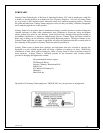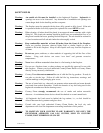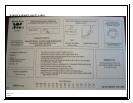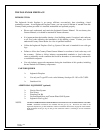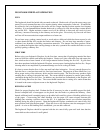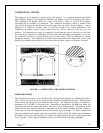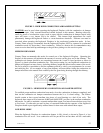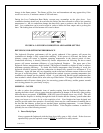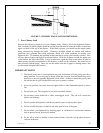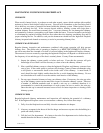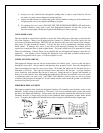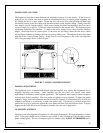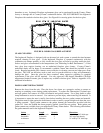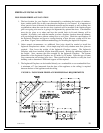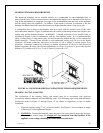
Version: 6.0
14
2. Negative Pressure
As the Inglenook fire burns, the exhaust gases are drafted up and out of the chimney system. The
Inglenook Fireplace system is “pulling” fresh air from somewhere to keep the fire burning
properly. The Inglenook’s exhausted draft air has to be replaced via a properly operating outside
air duct system connected to the fireplace. If not connected properly, the fireplace will draw air
to the firebox from inside the house or the fire will be starved due to a lack of available
combustion air. This incorrect process will create a negative pressure (reduced pressure inside
the house compared to outside air pressure) in your home. If your Inglenook Fireplace has been
properly installed, fresh combustion air will be supplied through the outside air duct to the fire.
Check the Inglenook Fireplace system by temporarily opening a window near the fireplace. With
the fireplace doors closed and a fire operating, you should see no change in the fire when the
window is temporarily opened. This check ensures your Inglenook has an adequate air supply
through the outside air tube and is unaffected by home air when the fireplace doors are closed. If
the fireplace doors are open, house air pressure may be affected in a negative or positive pressure
depending on conditions.
3. Fan Operation (i.e., Bathroom Exhaust, Kitchen Exhaust)
Exhaust fans draw air out of a home and may actually create negative pressure (absence of air or
reduced air pressure inside a well sealed home.) When operating your Inglenook hi-tech
fireplace, ensure that all of your home’s exhaust fans are turned off or that a window is opened
slightly to ensure these fans do not create a negative pressure inside your home. If these exhaust
fans are operated with a window slightly open, the fans will not try to draw air from the fireplace
which could create a smoke condition inside the home.
4. Wet Wood
Wet or tarred firewood will smolder and smoke instead of burning as efficiently as seasoned
woods. Improperly seasoned wood will increase annual maintenance and operating costs of your
Inglenook Fireplace. It is worth your time, money, and enjoyment to ensure that you have good
seasoned wood to burn in your Inglenook Fireplace.
5. Blocked Chimney
The chimney serves as an exit for all burnt gases created during the fire burning process.
Blockage (heavy soot or dirt) of either the chimney or the air intake port may make the Inglenook
Fireplace operate improperly or render it unusable. Always ensure, prior to the heating season,
that a qualified service technician has checked the fireplace chimney and outside air intake
system. This simple process should ensure an enjoyable heating season with the Inglenook
Fireplace.
6. Chimney too Short
The Inglenook Fireplace minimum chimney height is 8 feet. This minimum height does not
include the fireplace height. The Inglenook chimney must extend at least 3 feet (915 mm) above
its point of contact with the roof and at least 2 feet (610 mm) higher than any roof or wall within
10 feet (3 cm) of it. If installed with offsets, the minimum chimney height is 12 feet not
including the height of the fireplace. Additional chimney height will increase draft and therefore
will decrease the tendency of the Inglenook to smoke. Figure 5 shows a sloped roof chimney
installation.



